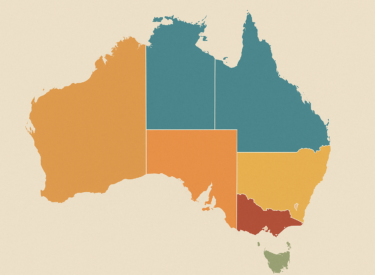With our markets on the move and a new property cycle now upon us, it’s becoming apparent that more and more investors are looking for the next property “hotspot.”
The problem is, hot-spotting is about short-term speculation, not long-term wealth creation.

Most property investors are trying to build their asset base so that one day it can replace their personal exertion income.
The key to building a substantial property portfolio is to use your first property to leverage into your next property and then use those two properties to leverage into more investments, and so on.
You will only have the ability to do this if you invest in locations that consistently provide long-term capital growth.
By definition, ‘hotspots’ are not these types of areas.
Just as quickly as they heat up, property values in these locations can come off the boil and cool very quickly.
Sure many of the hotspots predicted by some of Australia’s property analysts turned out to be correct.
Some of the regional areas and mining towns boomed, at least for a while as investors chased up prices, but unless they got the timing right, chasing the next hotspot turned out disastrous for most investors.
After the initial price growth, often driven by a flood of investors in these small markets, prices stalled and often dropped substantially, leaving many with properties worth considerably less than they paid and with less rental income than they expected.
They are now unable to sell their properties as buyers have abandoned these markets, which have little depth from local demand.
If you’re into investing in short-term trends, being right isn’t what’s important; it’s being right at the right time that counts.
Very few can do that, so the history of investors trying to find the next boomtown is littered with people who get the story right and the outcome wrong.
Instead, I buy in areas that have a proven long-term history of outperforming the average capital growth and that are likely to continue to outperform, because of the demographics of the people living in the area.
Hot spotting is virtually the opposite of this sensible, not-so-sexy, tried and tested system for successfully building a property portfolio.
What works now vs what has always worked
And with a new property cycle upon us, if history repeats itself, and it surely will, many investors will get it wrong.
They will be looking for the type of investment that “works now” while sophisticated investors will only put their money into “what’s always worked.”

Sure, next year there will be a new hotspot which will become a future not spot.
Yes, some regional locations will outperform the big capital cities - but it's wrong to compare a town of 5 or 10,000 people to a city of 5 million people.
Instead, the correct idea is to compare a regional town to a top-performing suburb within a capital city.
And some speculators will make money out of the next fad touted at the get-rich-quick webinars.
But most property investors will never develop the financial independence they deserve.
In my mind property is a long-term investment and therefore my strategy doesn’t change because of short-term changes in the economy or the markets.
I’d only invest in the type of property that has always been a good investment, rather than one that “works now.”
I know that location will do the bulk of the heavy lifting in my property’s performance, so I would only invest in high-growth suburbs in our big 3 capital cities, knowing that their economic fundamentals, population growth, and gentrification will underpin my property’s performance.
Then, I would only buy an investment-grade property – one that would be in continuous strong long-term demand by affluent owner-occupiers and one with a high land to asset ratio.
Property investing is dogged by dozens of different variables and although many property spruikers attempt to make it an exact science, the reality is, there will never be a ‘perfect time to invest or the ‘perfect property to buy.

That said, there are some principles that can be applied whenever you consider investing in real estate, to ensure that you are as comfortable as possible and exposing yourself to the least amount of risk.
These include:
- While many people generalise about “the property market” there are many submarkets around Australia. Each state can be at a different stage of its own property cycle and within each state, the markets in different areas are segmented by geography, price points, and type of property.
- Rather than trying to time the market, buy the best assets you can. Timing your purchase well will give you a one-off bonus. However, owning an investment-grade asset that grows at wealth-producing rates of return will see your portfolio outperform over the long term.
- Strategic property investors ‘manufacture’ capital growth through property renovations or development.
- Our property markets are not only driven by fundamentals, but also by the often irrational and erratic behaviour of an unstable crowd of other investors. While the long-term performance of property is influenced by the fundamentals, its short-term performance is much more affected by market sentiment.
- Treat your property investments like a business and stick to a proven strategy to take the emotions out of your investment decisions. Don’t make 30-year investment decisions based on the last 30 minutes of news.
- Recognise that property is a long-term play so set up financial buffers to help you ride the property cycles because the cycle will keep recurring and testing your nerves.














